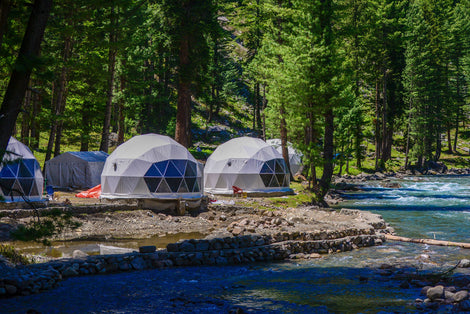Water Pressure Issues in Whole Home Systems
Low water pressure is one of those headaches that creeps up slowly. One minute your water flows just fine, and the next, you're standing under a trickle in the shower wondering what went wrong. This issue can be especially frustrating if you're using a whole home water filtration system. These systems are supposed to make your water healthier and cleaner, but if they're affecting the pressure too, it's hard to tell if they're helping at all. When things aren't working how they should, it's easy to blame the system. But there's usually a reason behind the pressure drop.
Water pressure problems don't mean your filtration setup is bad or broken. Most times, it points to a small problem that got ignored for too long. Just like a clogged air filter in a car, things work better when they're clean and in the right shape. Knowing what's causing the pressure change is the first step to fixing it, and sometimes it has nothing to do with the filtration equipment itself. Whether you're living fully off-grid or simply working toward more self-sufficient water usage, understanding these problems helps everything run more smoothly.
Common Causes Of Low Water Pressure
Several things can cause your whole home water filtration system to underperform when it comes to water flow. In many setups, the system isn't at fault by itself. It's usually just one of a few parts knocked off track. These are some of the more common places to start looking:
- Clogged filters or cartridges: Filters are meant to catch all sorts of debris and particles, but over time, they can get choked up with buildup. When this happens, water has to work harder to get through and that slows things down. If you haven't checked your filters in a while, this should be your first stop.
- Pump issues: In off-grid homes, pumps play a big role in keeping water pressure steady. Whether it's a well pump or a booster pump, any wear-and-tear or improper sizing can cause uneven pressure throughout your home.
- Improper plumbing configurations: Sometimes, it's not about the filter or pump at all. Pipe size, routing, and materials all affect how easily water flows. Old, narrow pipes or plenty of tight turns can reduce flow across the system.
- Too many water fixtures running at once: When multiple showers, faucets, or appliances are used at the same time, water gets split up. If your filtration or pump setup isn't built to handle that demand, pressure drops in each outlet.
An easy example is trying to run a washing machine and dishwasher while someone showers. If the pump can't keep up or filters are half-clogged, all those lines end up feeling weaker.
Identifying And Troubleshooting Problems
Before calling someone out to look at your system, you can do a few non-invasive checks to figure out what's going wrong. These steps won't fix major issues, but they can help you figure out where the trouble starts:
1. Check your filters: Take a look at the filters and cartridges in the system. If they're discolored, slimy, or clearly blocked, they need to be changed. Even if they're not totally clogged, that buildup can still cause slowdowns.
2. Listen to your pump: Pumps usually make consistent noise during operation. If it's louder than usual, cycling on and off quickly, or not turning on at all, there might be an issue with it or its power supply. Some systems will have pressure gauges that show whether it's working as it should.
3. Look at your system layout: Are all your pipes in good condition? Any visible leaks, drips, or moisture around fittings should be checked right away. Also, consider how far the water needs to travel. Some homes have long runs of pipe that cause pressure to drop by the time it reaches the furthest faucet.
4. Test different zones: Try running each faucet or shower separately and see if the pressure changes. If pressure is low everywhere, the problem is likely within the filtration or pump area. If it's just one fixture, it could be the fixture clogging, not the system at all.
Getting clear on what isn't working helps shorten the path to a fix. If everything still feels off after these checks, most water pressure issues involving full home filtration won't correct themselves and usually need a professional's eye to get it right. Better to catch it early than deal with low pressure all year long.
Solutions And Maintenance Tips
Once you know where the pressure problems are coming from, the next step is putting a fix in place that actually works long term. A good maintenance plan can stop these kinds of issues from showing up altogether. It can also help make life a little easier when you're trying to enjoy consistent water pressure throughout the year.
Start with the basics:
- Clean or replace filters every few months, or earlier if you notice buildup. If your filters are disposable, mark your calendar so you don't forget. For reusable ones, rinse them often and give them time to dry before putting them back.
- Keep an eye on your pump. Watch for any changes in sound or behavior. If it seems strained, that's a red flag. Make sure it's the right size for your home. Overloading a small pump with too many fixtures can wear it out faster.
- Check your pipes. If upgrades are needed, consider switching out narrower piping for something that allows better flow. Even replacing a few tight elbows with wider angles can improve pressure.
- Use a pressure gauge to monitor when things look off. It'll give you a sense of what "normal" looks like for your system so you can catch drops early.
One example would be switching from a half-inch pipe supplying multiple bathrooms to a three-quarter inch line. That small size jump can ease the strain during heavy use and help maintain steady flow where it's needed.
Don't ignore slow pressure changes, even if they seem minor at first. They're usually a sign something inside the system needs attention before it turns into a larger repair.
Seek Professional Help
There comes a point when the issue isn't just about changing out filters or checking pressure levels. Some fixes are beyond what most homeowners want to deal with, and in those cases, reaching out to a pro really saves time and hassle.
A professional who works with off-grid systems and whole home water filtration setups will know what to look for. That kind of experience makes it easier to pinpoint whether a filtration system is underpowered, a pump's wearing down, or the system is installed in a way that's holding back performance.
Here's what you can usually expect:
- A full review of the system including the source water, filtration stages, and all active components
- A test of current water pressure compared to target performance levels
- Suggestions for upgrades like booster pumps, inline filters, or new piping routes
- Clear answers as to what parts need to be swapped, cleaned, or resized
When a setup gets older or was never quite right to begin with, you're better off letting someone trained look at it. That way you're not replacing parts that aren't broken or guessing what's causing inconsistent pressure around your home.
Keeping It Flowing Smoothly
Solving water pressure issues means more than a one-time fix. If you're using a whole home water filtration system, routine care and smart upgrades go a long way. Systems that once had poor pressure can actually work better than ever once they're dialed in.
Problems don't usually happen overnight. They're small things that build up over time like blocked filters, aging pumps, or undersized pipes that just can't keep up anymore. Paying attention without needing to become a tech expert is enough to stop most problems before they wear down other parts of the setup.
If you've done the basics but pressure still isn't where it should be, don't wait for it to get worse or more expensive to fix. Small actions now can keep your system healthy for the long haul. Keeping up with maintenance, tracking performance, and having a set plan for checkups helps keep your off-grid setup efficient and dependable.
To fully get the most out of your whole home water filtration systems, consider pairing them with reliable off grid solar kits. At Green Vista Living, we're here to ensure your systems run smoothly while staying efficient and sustainable. Explore our collection of solar kits to find the perfect match for maintaining optimal water pressure and an environmentally friendly home.







